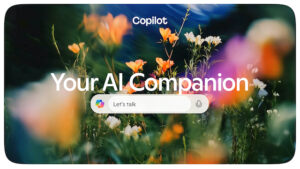Reflecting on 50 Years of Microsoft: Your Experience

Microsoft: Celebrating 50 Years of Innovation and Challenges
On Friday, Microsoft will officially celebrate its 50th anniversary. As one of the most influential companies in the tech industry, its journey has been marked by both remarkable successes and notable failures. From its groundbreaking software products to its less popular ventures, Microsoft has certainly made an impact on the tech landscape.
Key Accomplishments
Software Dominance
In the early years, Microsoft’s software products, particularly MS-DOS and Windows, became nearly essential for personal and business computing. The launch of Windows 3.0 in 1990 marked a turning point, providing a user-friendly interface that helped Microsoft dominate the operating system market. This was followed by Windows 3.1, which solidified its position as the leading OS for PCs.
Productivity Suite
Microsoft’s Office suite revolutionized how people work by bringing together essential applications like Word, Excel, and PowerPoint. Despite competition from Google and others, Microsoft Office remains a mainstay in workplaces around the globe.
Programming Languages
Although it did not create BASIC, Microsoft’s version became popular among developers and laid the groundwork for later programming languages and development tools that would follow.
Significant Missteps
Windows Mobile and Phone
While Microsoft enjoyed success in the early 2000s, its mobile strategy failed to gain traction. Windows Mobile and later Windows Phone were unable to compete against the growing dominance of Apple’s iOS and Google’s Android operating systems.
Other Notable Failures
Several products did not meet expectations. For instance, Microsoft Bob was a well-remembered failure aimed at making computing easier for newcomers. More recently, Windows 8 received criticism due to its radical changes that confused many users. Similarly, attempts to enter the music player market with the Zune fell flat against Apple’s iPod.
Lessons Learned from Acquisitions
One aspect that stands out in Microsoft’s history is its acquisition strategy. The company’s purchases have yielded mixed results. For example, the acquisition of LinkedIn and GitHub is often highlighted as a wise investment, reinforcing Microsoft’s presence in social networking and code collaboration. However, its purchase of Nokia is frequently categorized as a miscalculation, as it failed to revitalize Microsoft’s position in the phone market.
Cloud Computing and Artificial Intelligence
In more recent years, Microsoft has shifted its focus towards cloud computing and artificial intelligence. The Azure cloud service has become a strong competitor to Amazon’s AWS, enabling businesses of all sizes to rely on a powerful cloud platform. Simultaneously, Microsoft’s investments in AI technology, especially through its Copilot tool, signify a commitment to staying at the forefront of innovation.
User Experience
The impact of Microsoft’s decisions can be felt most acutely by its users. Many have witnessed the gradual evolution from early software like MS-DOS to today’s cloud services and AI tools. This journey has influenced careers and workflows profoundly, from learning coding basics to working with modern cloud-based applications.
As Microsoft approaches its 50th year, its legacy encompasses a complex history filled with triumphs and tribulations. From being a cornerstone of enterprise productivity to navigating through tech missteps, the company’s story continues to evolve. As users, developers, and business professionals engage with Microsoft’s offerings, feedback from the community remains invaluable in shaping the next chapter of this tech giant.






